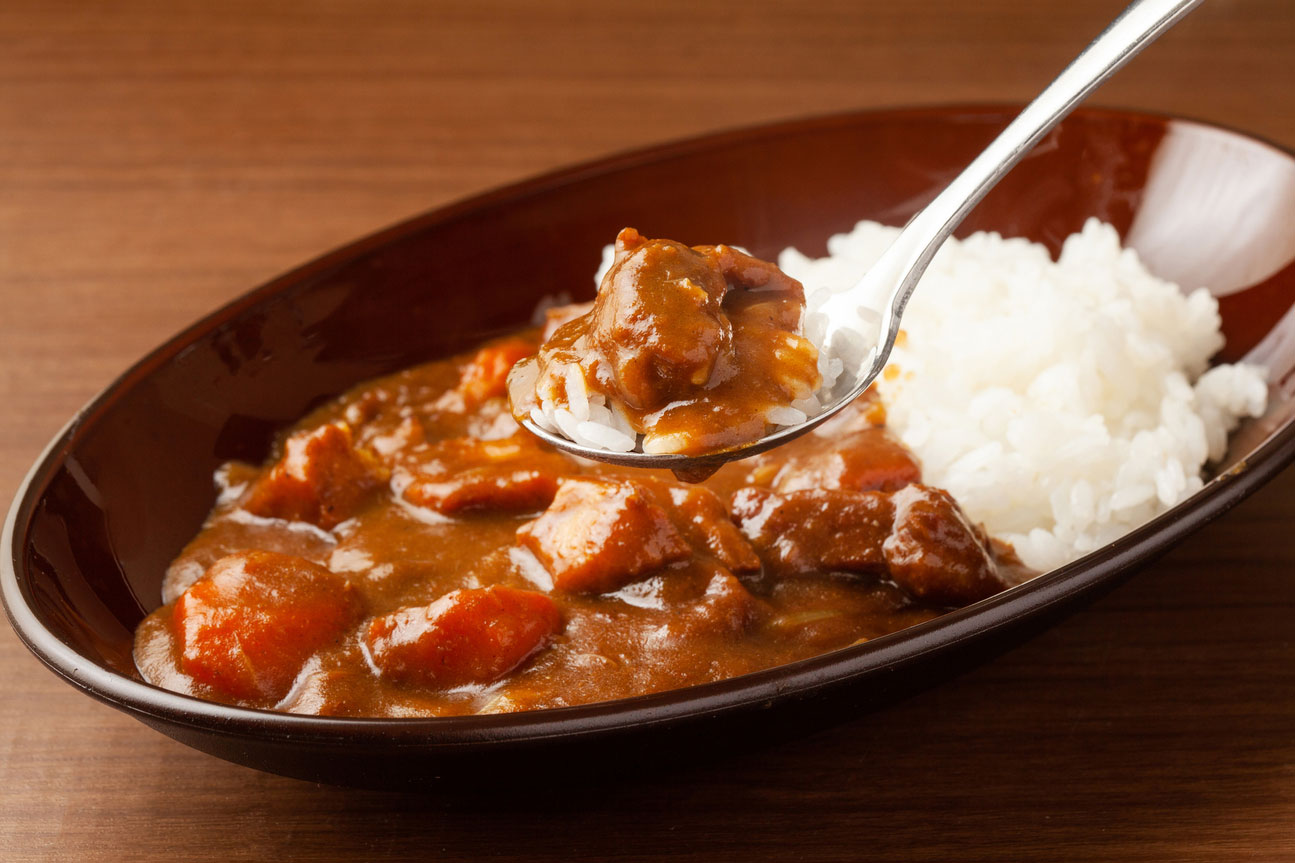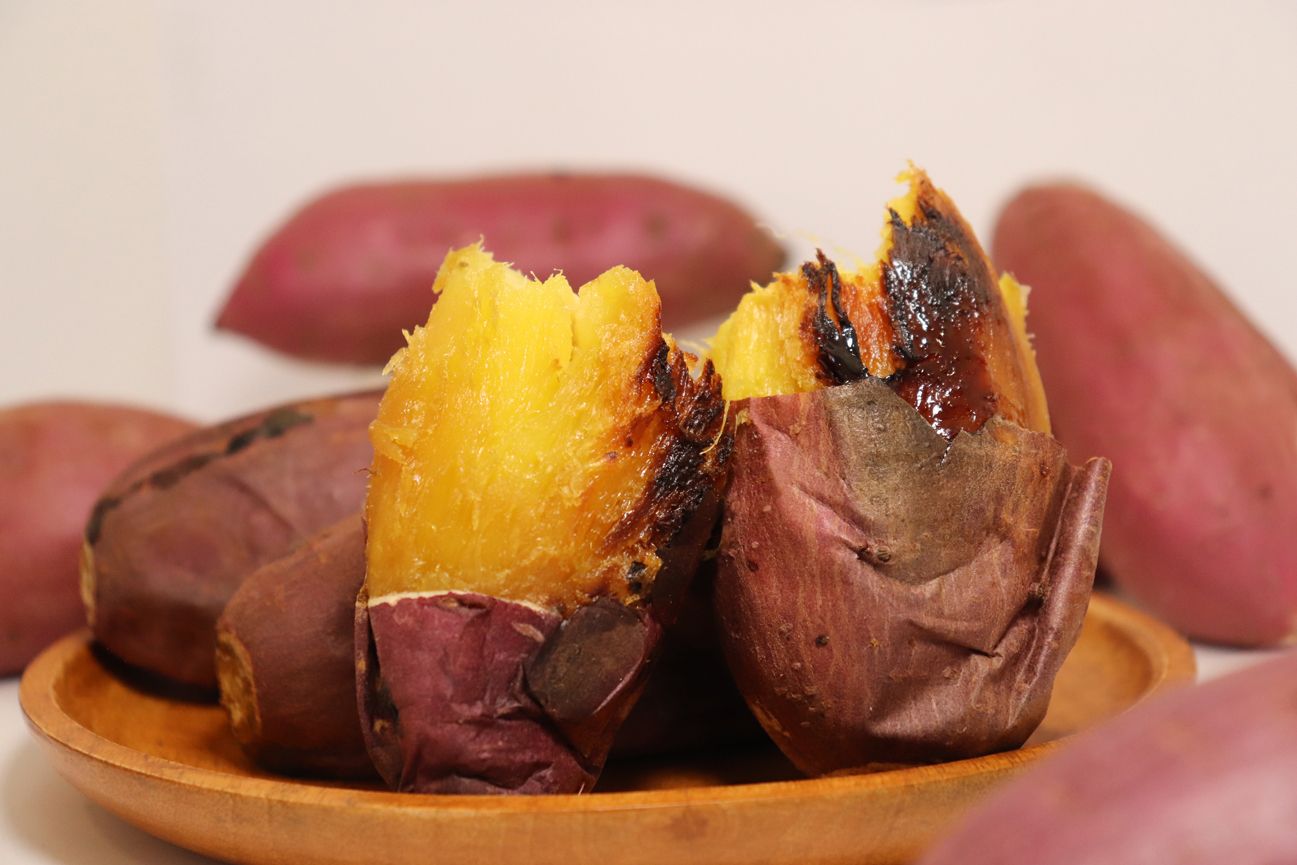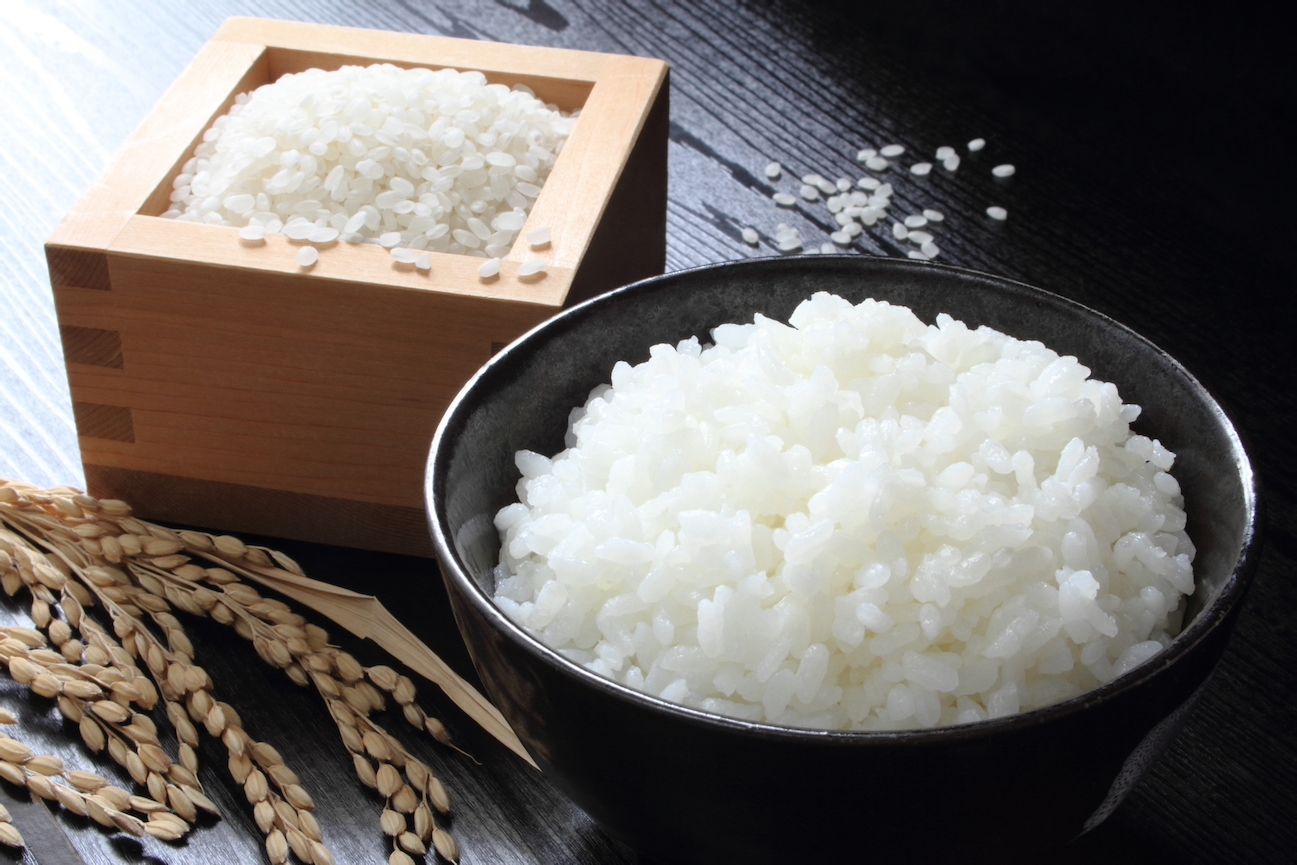
From the daily dinner table to traditional cuisine, at the center of the Japanese meal: "Rice"
Rice is a food essential in describing the dinner table of the Japanese people, and Washoku. Rice, which could even be called the foundation of the Japanese diet, is the main player on the table, taking an important role supporting other dishes. As the word rice in Japanese expresses both cooked rice and meal, rice has supported Japan's food culture for nearly 3000 years. Japan-grown rice is rated for its appearance, good taste and high quality overseas too, and is eaten widely around the world as a Japan-produced food essential to Washoku, as well as sushi and rice balls.
Rice, eaten and valued from olden times in a central place in the Japanese people's diet, is cultivated in spacious paddy fields running with water. The rice seedlings freshly sprouting, and the ears of rice turning golden at harvest time, both herald the changing of Japan's beautiful seasons.
The history of rice stretches back over 3,000 years, and it is known to have been cultivated from around the end of the Jomon Period, becoming a staple food during the Nara Period. A clearly divided climate of seasons with much rain and seasons with little rain is said to be suited to rice-growing, so that for Japan with its abundant water filling paddy fields and its rainy season, rice-growing was an ideal and natural thing. As history progressed, and the Japanese population rose, paddy fields were created successively and the rice yield began to increase. At the same time as nurturing the bodies of the Japanese people as the staple food put on the daily dinner table, rice also came to support the economy of Japan.

Paddy fields running with water makes the beautiful rural scenery of Japan.
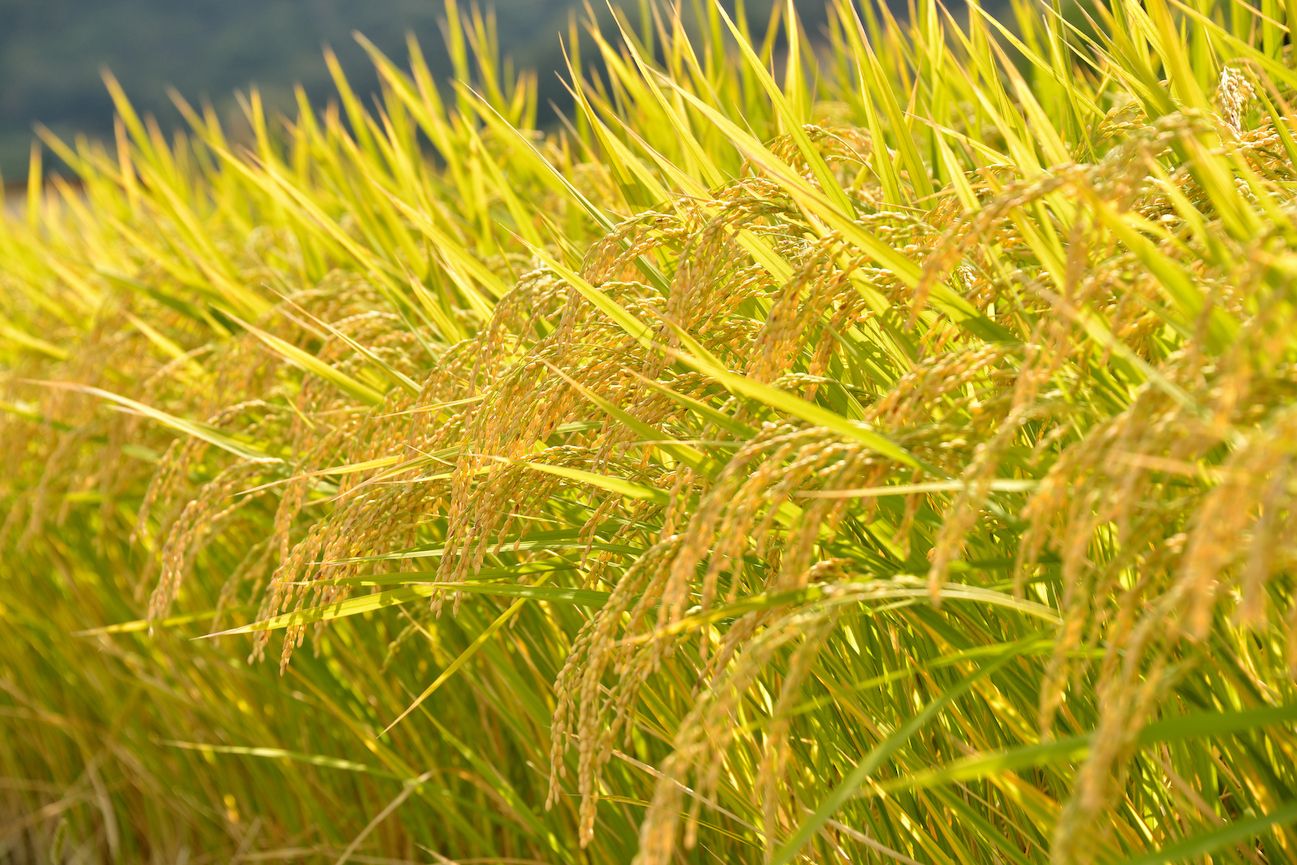
The ears of rice, the fruit of the autumn, turn golden at harvest time.
The basic way to eat rice is to cook it in water. Brown rice is milled and polished, and the white rice cooked over a flame with water until it changes appearance to fluffy and glutinous, whereupon delicious rice is ready to eat. The method of polishing, too, alters the cooking time, flavor and nutritious value, according to how much of the husk remains in brown rice, half-polished rice, etc., as well as white rice. Health-consciousness in recent years has led to research on how to eat rice with its husks remaining in delicious ways. Among cooking utensils, there are various high-functioning rice cookers, attending to water volume and quality, temperature, etc., for sale in Japan - not just pots and pans - showing that there is a deep care and affection lavished upon the rice that is eaten on a daily basis.
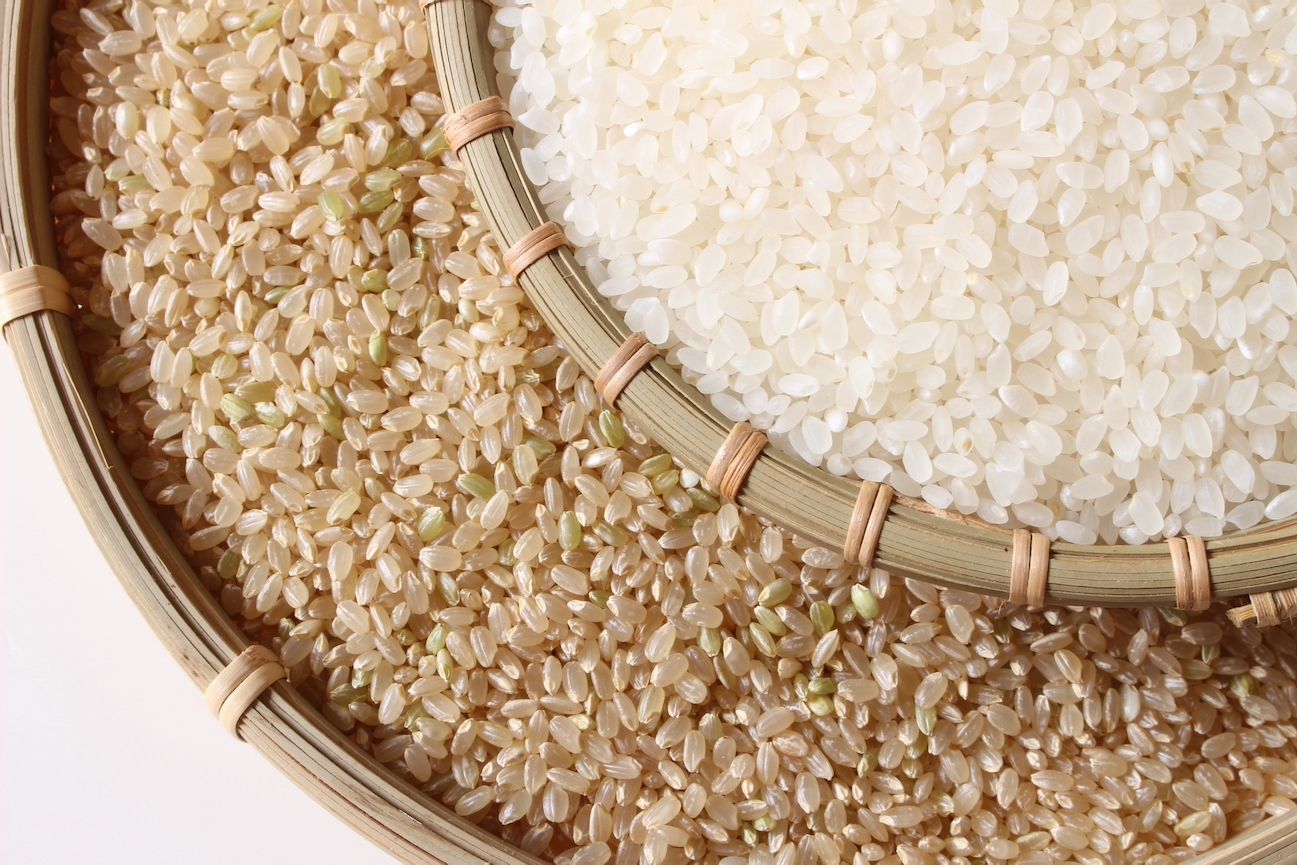
Brown rice and white rice. Both the nutritious value and flavor alter with polishing, bringing many wonders of rice to enjoy.
The style of meal with rice as staple is said to have started from the Yayoi Period. The basic simple meal used to be rice with one soup and one dish, but gradually it took the form of a main food and side foods, with rice at the center accompanied by various dishes created by boiling or grilling fish or meat and vegetables. Today, still, the basic style of Washoku is "one soup and three dishes", which maintains a nutritional balance. "One soup and three dishes" means Japanese cuisine (Honzen ryori) composed of the main food of rice with a soup, main dish and two side dishes, and indicates the number of dishes set before one person. Such a meal provides a good balance of carbohydrates, protein, fat, vitamins, minerals, etc. necessary for the body and health. The meal of "one soup and three dishes" is a food culture for savoring, along with rice, seasonal ingredients and cuisine using produce particular to an area, and also leads to a natural, healthy diet for the Japanese people.

Example of one soup and three dishes. In addition to rice, miso soup and pickles, there is one main dish of meat, fish, etc., accompanied by two side dishes using vegetables.
Various varieties of rice are cultivated around the world, with a presence in the food culture of many countries bringing out, and blending with, the flavor of the cuisine. Among them, the wonder of Japanese rice is, more than anything, its flavorful, glutinous texture. It is distinctive in its rounded eliptical shape, and considerable stickiness and sweetness. Also, famous brands of rice are produced from north to south along the Japanese archipelago, with features and selection in accordance with the climate and customs of the various regions. In particular, "Koshi hikari", grown all over the country, is famous, and "Hitome bore", "Hino hikari" and "Akita komachi" are also among the over 800 varieties. The stickiness, sweetness, texture, etc. of just-cooked rice is researched on a daily basis, which suggests the inquisitive mind particular to Japanese people for sensing, and pursuing, delicate differences in flavor. Furthermore, savoring "Shinmai", the new rice harvested that year, is, for Japanese people, a feature of their diet, involving sensing the deliciousness of the season and experiencing the best of the season.
Another distinctive feature, and wonder, of rice is its ability to undergo various changes in appearance in processed products. When fermented, rice will produce Japanese sake and condiments like rice miso, soy sauce and mirin, sweet sake. Rice bran, remains from the polishing process, are mixed with salt and water to make a bed of salted rice bran which can be used for pickling. Rice flour, too, which is rice grinded and turned into a powder, is a traditional processed food eaten since the Nara Period. It includes coarse-grain top-grade rice flour, glutinous flour made from glutinous rice, and refined rice flour, and these are familiar from olden times as ingredients for Japanese snacks such as sweet dumplings, rice cakes, jellied bean paste and rice crackers. In recent years, due to advancement in flour-milling technology, finely ground rice flour has been produced, which is used in abundant variation in bread, cookies, pasta, cakes, tempura flour and types of noodles. Also from the point of health-consciousness and gluten-free, it has drawn attention as an ingredient overseas too, and is often used as a substitute for wheat flour, a potential cause of allergies. The wonder of rice flour lies in the ability to take in the high nutritious value of rice, with its excellent balance of amino acids, through different ways than eating rice. To eat rice is to savor Japan. Simple but profound, it is full of possibilities, as well, for a variety of cuisine.
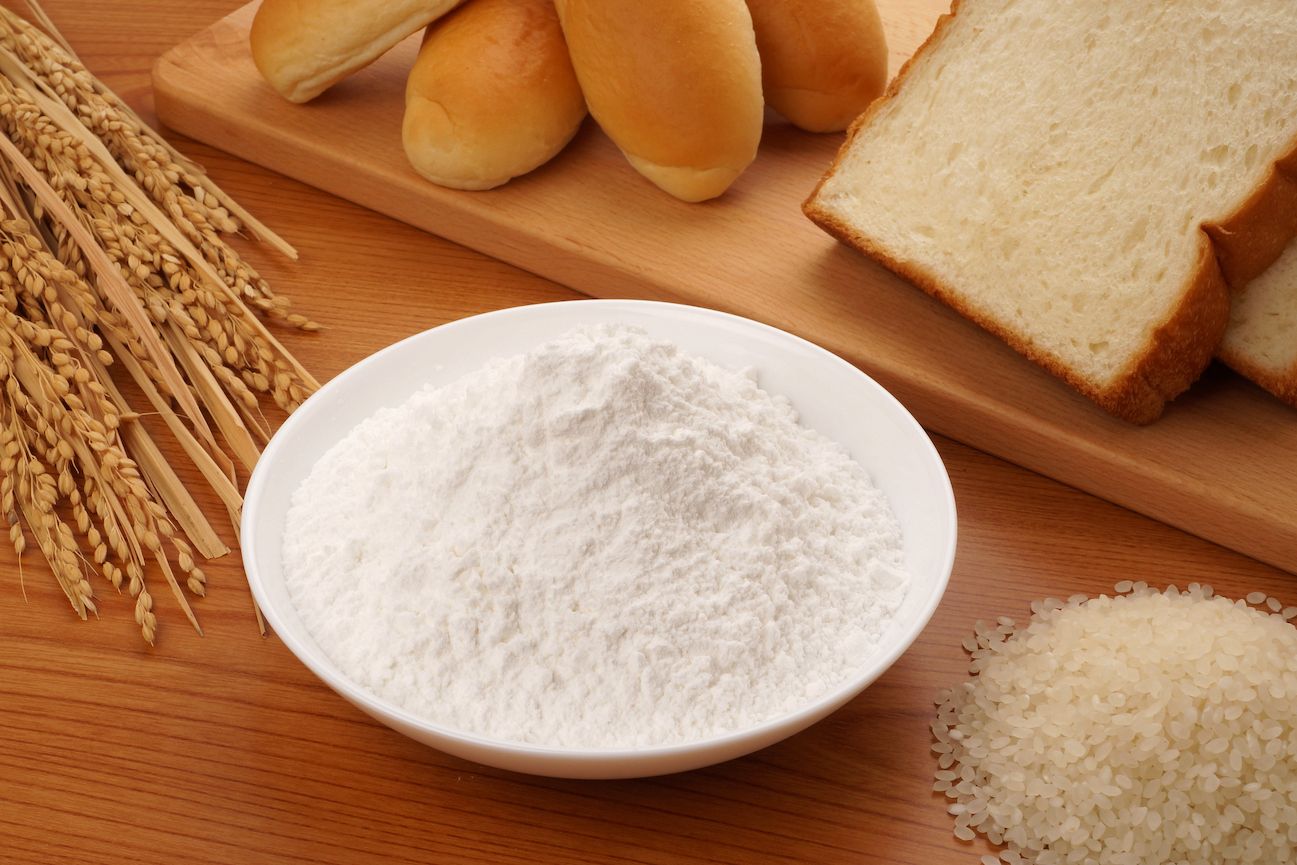
"One soup and three dishes"
A menu composition of white rice, soup and three dishes that is also called the basis of Washoku. With a nod to the "Honzen ryori" of ancient Japan, it is a chance to savor seasonal cuisine with the staple of white rice. Source of energy is rice. Giving liquid to the meal is soup. Among the dishes, the main dish of meat or fish helps build the body, while the two side dishes of chiefly vegetables, types of mushroom, types of seaweed, etc., supplement the nutrients not provided by the main dish, so that they ideally improve physical condition. Traditional culture of Japan, and a meal style rationalizing a healthy diet.
Reference: Japan Rice and Rice Industry Export Promotion Association; Washoku Japan
Photos supplied by: photolibrary
Text: Miki Suka




